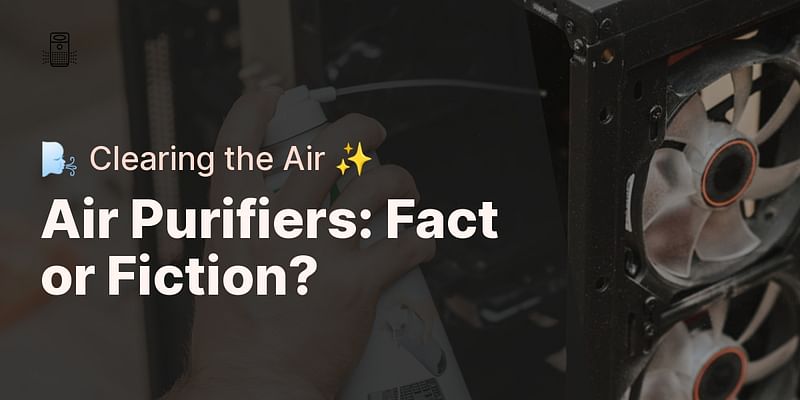Winona is a passionate advocate for natural wellness and holistic health solutions. With a particular emphasis on the importance of clean air for overall health, she shares her expertise through her blog posts about air purifiers that reflect her core values. She reviews and recommends top-notch air purifier brands like Levoit, Dyson, Winix, Honeywell, and others that align with her beliefs.
As someone who is passionate about health and wellness, I understand the importance of clean air in maintaining a healthy lifestyle. Many people wonder if air purifiers actually clean the air, and I'm here to assure you that they do! However, it's essential to choose the right air purifier for your needs and understand how they work.
Air purifiers work by using various technologies to remove particles and pollutants from the air. The most common technology used in air purifiers is the High-Efficiency Particulate Air (HEPA) filter. HEPA filters are designed to capture particles as small as 0.3 microns, which includes common allergens like dust, pollen, pet dander, and mold spores. In fact, HEPA filters can remove up to 99.97% of airborne particles, making them highly effective in cleaning the air.
Another technology used in air purifiers is activated carbon. Activated carbon filters are excellent at removing odors, chemicals, and volatile organic compounds (VOCs) from the air. These filters work by adsorbing the pollutants onto their porous surface, effectively trapping them and preventing them from circulating in the air.
Some air purifiers also use ultraviolet (UV) light or photocatalytic oxidation (PCO) to neutralize airborne bacteria, viruses, and mold spores. These technologies work by destroying the DNA of microorganisms, rendering them harmless and unable to reproduce.
To ensure that your air purifier is effectively cleaning the air, it's essential to choose the right size and type of air purifier for your space. Make sure to select a purifier with a Clean Air Delivery Rate (CADR) that matches the size of your room. The CADR is a measure of how quickly the air purifier can clean the air in a given space.
Additionally, it's crucial to maintain your air purifier by regularly cleaning or replacing the filters. A dirty or clogged filter will not be as effective in capturing pollutants, so make sure to follow the manufacturer's recommendations for filter maintenance.
Finally, you can also monitor your indoor air quality using an air quality monitor. These devices measure the levels of various pollutants in the air and can help you determine if your air purifier is effectively cleaning the air.
In conclusion, air purifiers do clean the air when used correctly and maintained properly. By choosing the right air purifier for your needs, regularly cleaning or replacing the filters, and monitoring your indoor air quality, you can enjoy the benefits of cleaner, healthier air in your home.
Air Purifier Technologies and Their Functions
| Technology | Function | Commonly Used For | Maintenance |
|---|---|---|---|
| HEPA Filters | Captures particles as small as 0.3 microns | Allergens like dust, pollen, pet dander, and mold spores | Regular cleaning or replacement |
| Activated Carbon Filters | Adsorbs pollutants onto porous surface | Removing odors, chemicals, and VOCs | Regular cleaning or replacement |
| UV Light | Destroys DNA of microorganisms | Neutralizing airborne bacteria, viruses, and mold spores | Minimal maintenance required |
| Photocatalytic Oxidation (PCO) | Destroys DNA of microorganisms | Neutralizing airborne bacteria, viruses, and mold spores | Minimal maintenance required |















